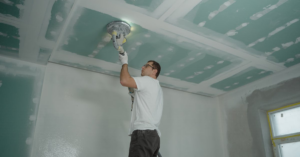A couple of years ago, Beirut was hit by an incredibly destructive port explosion. Initial reports indicated that the fire at a warehouse that sold firecrackers was the cause of the explosion. The facility was situated just close to Beirut’s shopping and nightlife areas. The maintenance was completed on the doors of the warehouse hours prior to the blast. But, it was difficult to pinpoint the reason for the blast immediately.
UNESCO Li Beirut
The UNESCO Li Beirut program mobilizes all of the world’s community while Beirut tries to restore. The program is seeking to collect half a billion dollars to help rebuild and preservation of cultural resources in the region. The group will host an event for donors in September , which will help to raise money. Beirut’s mayor Beirut is expected to pledge to end the speculation on property and other transactions which exploit the vulnerability of residents at the time of the conference.
Certain private museums such for the Robert Mouawad Personal Museum and the Villa Audi Mosaic Museum have been shut down permanently. While it is true that the National Museum suffered most of the destruction, its exhibits and objects were not destroyed. American University of Beirut lost its glass display of ancient objects. The museum’s Facebook page there were videos of the lifting and salvaging process. Blue Shield volunteers helped to remove damaged artifacts.
Lebanese Red Cross
The Lebanese Red Cross provided free aid to those in need following the devastating explosion. It is the Red Cross provides assistance for over 28,000 individuals, which includes blood transfusions as well as the primary healthcare. Since the beginning it has been the LRC has been providing independent humanitarian aid for over 75 years. The Red Cross is committed to providing assistance to everyone those who require them regardless of race, religion or gender.
In the last few months the economy of the nation is in decline. It was on the verge of locking down to prevent the spreading of the virus. The rich heritage of its culture that includes history and the arts and culture, is a valuable resource to the nation, and which was further hampered due to the closure of the port.
ALIPH
Two years following the Port Explosion The mission to Save Beirut’s Cultural and Architectural Heritage began in an effort to secure funds for a program in the field of culture. It also funded the development of four other projects specifically designed to stabilize structures that were damaged in the blast. They included temporary roofing as well as the shoring of 40 historical buildings. These include residential houses and patrician villas, and two historic palaces.
Based on a number of stories, the blast could be the result of an unattended fire in a building which contained fireworks. Warehouse 12 is located just 15 minutes away from Beirut’s nightlife as well as malls. Warehouse 12 was the location for maintenance times at the warehouse prior to the blast. The failure to adhere to the rules and regulations to restore historic properties could be attributable to the state.
UNESCO
UNESCO is a partner of its Directorate General of Antiquities, protecting the heritage of buildings and also is focusing its efforts on creative industries. Port Explosion resulted in 800 arts and cultural businesses having to be destroyed and the majority of them closing. A lot of them aren’t thinking about resuming their activities in the meantime as Lebanon is recovering from the blast. The goal is to guarantee that these businesses survive.
A global coalition of museums has arranged cultural first assistance for Beirut’s damaged institutions. 27 signatories, including UNESCO as well as the World Monuments Fund signed a note of support on the 11th of August. They pledged their support to Beirut’s full rehabilitation. The effort is already yielding results.
This content is contributed by Guestomatic









